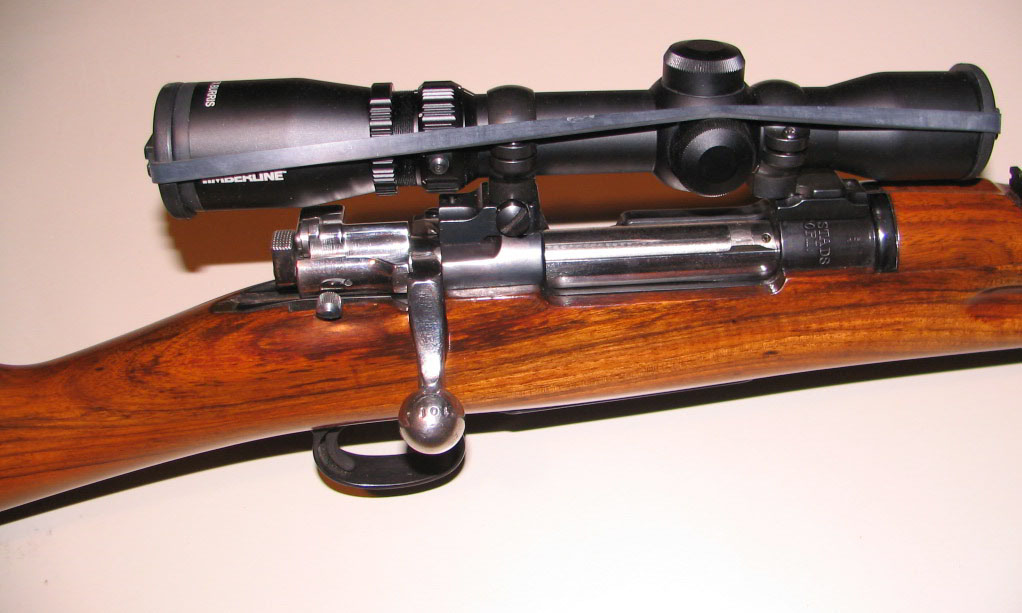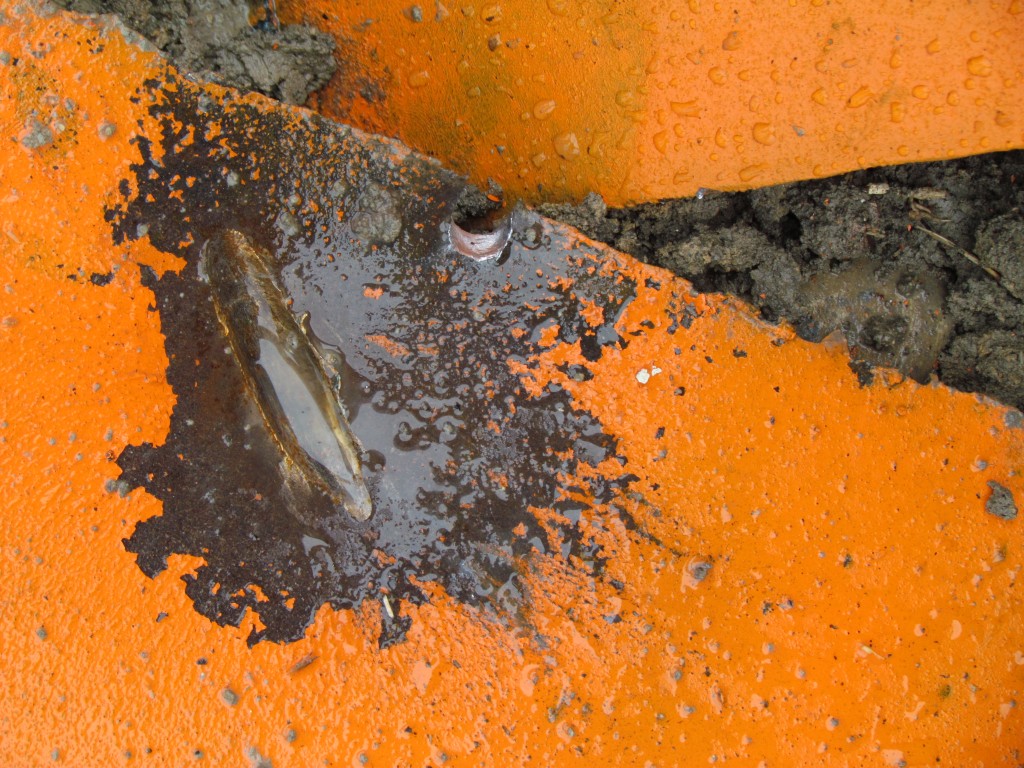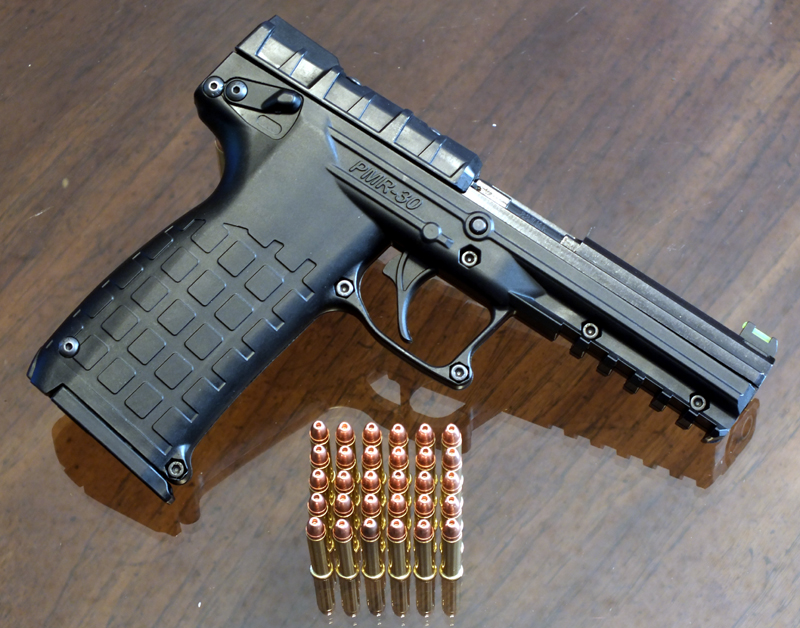What happens when a new shooter firing my M82A1 skipped a .50 BMG round off of the ground 250 yards short of the target.
Posts tagged Firearms
Ruger Takedown 10/22 Tactical
Probably the most exciting thing to come out of this year’s SHOT Show, to me anyway, is the new Ruger 10/22 Takedown with factory threaded barrel and flash suppressor. It maintains all of the features of the original Takedown 10/22 except in a black-finished alloy steel and with the addition of the aforementioned threads and A2 birdcage style flash suppressor.
The 1/2×28 threads mean that, in addition to taking any AR-15/M16 style muzzle device, it is also ready to have a .22LR can added. Since I’ve been wanting to see how the Takedown 10/22 works with a suppressor for a while, this is the perfect opportunity for me to beg plead and cajole for a T&E model from Ruger.
So – if you guys at Ruger are listening, shoot me an email. I’d love to take one for a test drive!
Specifications:
- Material: Alloy Steel
- Finish: Satin Black
- Twist: 1:16 RH
- Grooves: 6
- Weight: 4.67 lbs.
- Length of Pull: 13.50″
- Barrel Length: 16.62″
- Overall Length: 36.75″
- MSRP: $419.00
Shortening the Ruger Takedown 10/22 with a Folding Stock
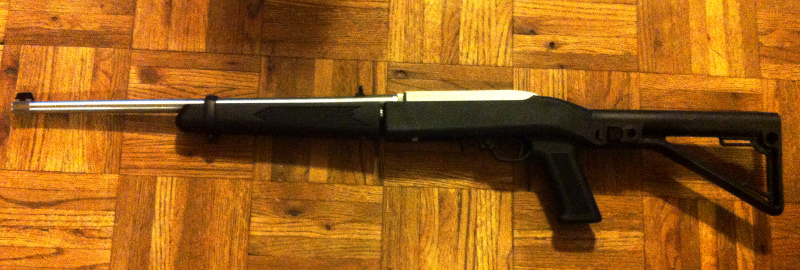 I’m truly in love with my little Takedown 10/22. It’s very portable, lightweight, and very nearly the perfect pack-gun right out of the box. But there is room for improvememt.
I’m truly in love with my little Takedown 10/22. It’s very portable, lightweight, and very nearly the perfect pack-gun right out of the box. But there is room for improvememt.
The first modification I wanted to make was the addition of a folding stock. When developing an origami-rifle, why Ruger declined to include this as an option is beyond me. Luckily, there are already aftermarket manufacturers who quickly saw the niche and filled it.
Butler Creek has made folding stocks for the 10/22 for years, but the configuration of the the Takedown 10/22 makes these existing products unsuitable. Enter AGP Arms.
As soon as I discovered that they had a folding stock made specifically for the Takedown 10/22 I had to have it. The price was right and shipping extremely fast. Installing the new stock is stupidly simple: remove one screw and the action lifts right out the top of the stock. Drop the action into the new stock and screw it back together and voila. Your Takedown 10/22 just shrank some more.
The only problem I found was cheek weld: using the stock iron sights provided on the gun I found that I had to really get close and comfy with the stock. Being a male 6 feet tall and just shy of 200lbs, I reckon it would probably fit youths and women much better than it does myself. A half inch or one inch butt pad is available with the stock for those like myself who need a little bit longer length of pull.
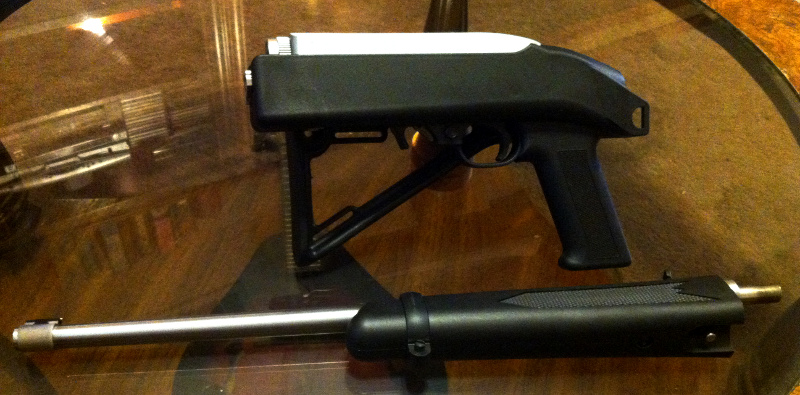 The stock doesn’t lock in the closed position, but the hinge is tight enough to keep it from swinging open on its own while not making it difficult to open quickly. A spring-loaded black plastic tab locks the stock in the open position, and depressing a button just behind the tab unlocks the stock so that it can once again be folded.
The stock doesn’t lock in the closed position, but the hinge is tight enough to keep it from swinging open on its own while not making it difficult to open quickly. A spring-loaded black plastic tab locks the stock in the open position, and depressing a button just behind the tab unlocks the stock so that it can once again be folded.
Obviously the nylon construction of the stock, in particular the plastic locking tab, is more prone to wear from normal use than a metal stock in the same configuration. The weight savings more than makes up for this drawback however, and the glass-filled nylon is more than tough enough to last for years of constant use.
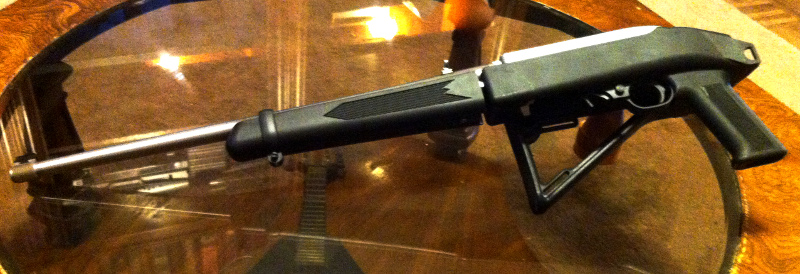 You can get your own folding stock for the Ruger Takedown 10/22 at AGP Arms.
You can get your own folding stock for the Ruger Takedown 10/22 at AGP Arms.
Dallas Area Blog Shoot II
I was lucky this weekend when my travels took me back home just in time for the second Dallas Area Blog Shoot. Organized by BobS and The Redneck Engineer, this second shoot took place at a private range south of Dallas where we had numerous pistol bays and a small 300 yard rifle range.
I had let The Redneck Engineer know that my attendance may or may not happen, but that if it did that I would bring all of my “fun to shoot” firearms for attendees to try out. Not surprisingly, the PMR-30 and Barrett M82A1 were the most popular.
Scribbler from Scribbler’s Scrawls shoots the M82A1
The Redneck Engineer takes his turn behind the stock of the big .50 caliber rifle.
And finally, Southern Belle from Bells a’ Ringing shows perfectly why I love sharing this rifle. That big grin alone is well worth the cost of the ammunition!
There are many more photos and videos from the shoot, but I had to leave town again the very next day and ran out of time to upload them all before I once again headed out. Keep an eye out here for them later when I can find a decent internet connection again.
My own PDW
More Takedown 10/22
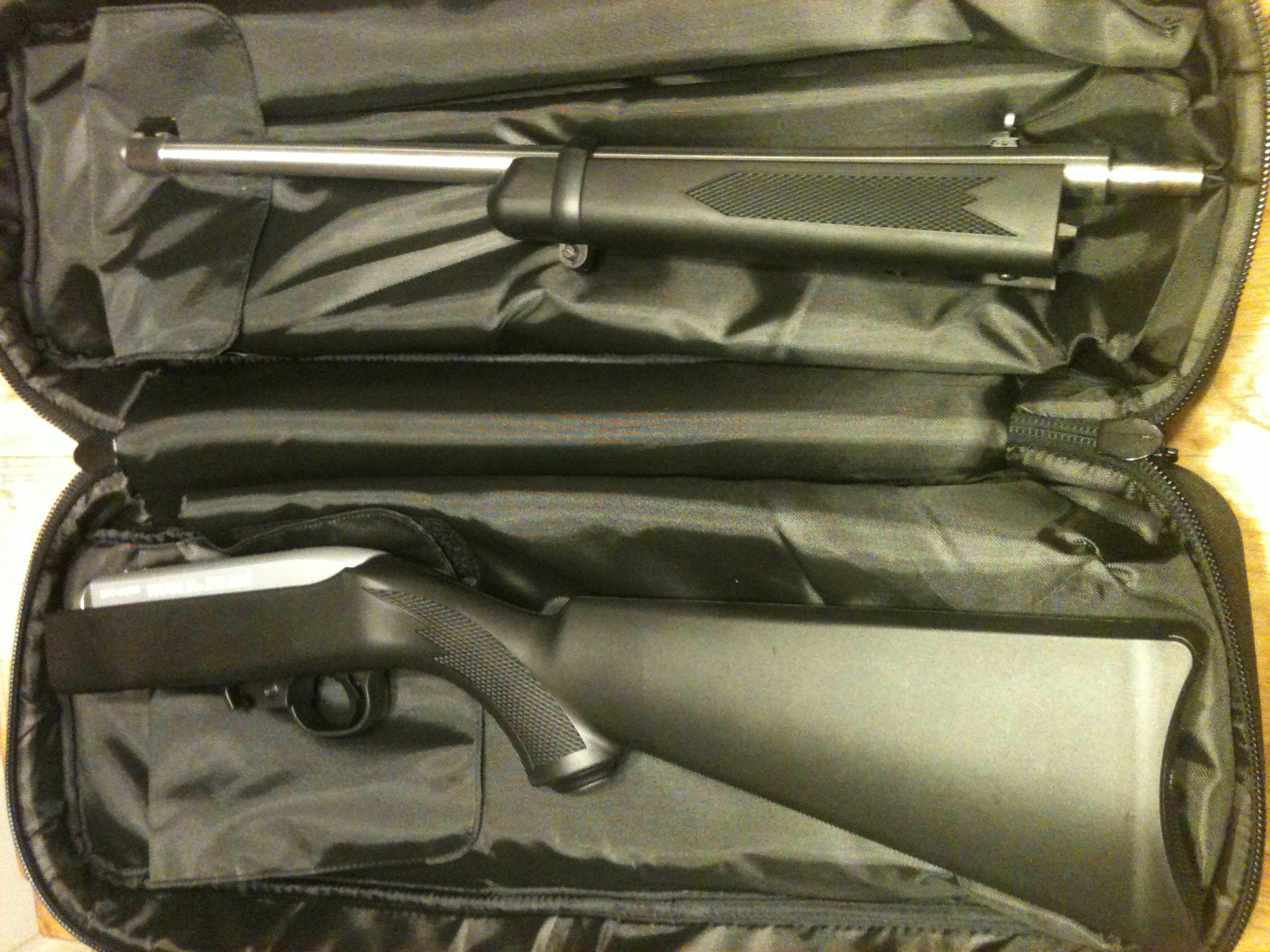 Jay G has his own review of the Ruger 10/22 up on his site. Go check it out.
Jay G has his own review of the Ruger 10/22 up on his site. Go check it out.
Range Rules
There is a serious disconnect between hunters, shooters, and the industry that supports us.
Not only in the manufacturing and marketing side, there is a disconnect in the training and practice side as well, specifically ranges.
Ranges are set up so that hunters and shooters have a safe place to practice their craft in a safe and legal environment. In almost all cities in the US, it is illegal to discharge a firearm. In other areas, unless you own acreage over a certain size, it is also illegal to discharge a firearm. Ranges provide an area where it is both safe and legal to shoot.
The topic I want to address is range rules and safety, because the rules enacted by ranges, usually in the name of safety, range from common sense stuff to ensure that people and property are not at risk, to some truly inane politically correct rules.
All ranges have rules, and most are fairly common sense rules implemented to ensure a safe and enjoyable shooting experience for all involved. Simple things like “keep firearms pointed down range” and “Don’t approach the shooting line when the range is ‘cold'” are common sense things. Other rules such as those that prohibit firing steel core ammo, set limits on maximum muzzle energy and caliber, or prohibit firing full metal jacket in some cases, are put in place due to limitations of the backstop. And all of these things make sense.
Some ranges have rules that seem odd or inane at first, such as those requiring all firearms be kept unloaded in a case when going to or from the range. Unless you are not going to be firing your concealed handgun, that means you’ve either got to break the rules or else unload your concealed handgun in your car, case it, and then go onto the range. Still, when you consider that most people at a public range will have minimal actual firearm training, if they have any at all, it seems a bit more reasonable to remind them to keep their firearms unloaded when not actually on the rage.
Then we’ve got range rules that begin to run right across the line into “WTF” territory. Some of these rules were dreamed up by an actuary tasked with underwriting the range’s insurance policy. One range I was at required all shooters to wear hearing protection. Makes sense, no? Until I discovered that the hearing protection they required was only muff style protectors: my Peltor 97079 Combat Arms Earplugs were not enough, according to the Range Officer.
This range also has a “slow fire only” rule that aims to prevent shooters from performing mag dumps (and often hitting the target hangers) and prohibits drawing from a holster. While annoying, these rules still serve a purpose.
But a few weeks ago while taking a new shooter to this range, a range I’d been frequenting for more than a decade, I was confronted with a new rule. Upon presenting my pistols for inspection, the R.O. took one look inside the box and pushed it away back towards me as if it were a snake coiled to bite.
“You can’t bring those in here,” he said.
I glanced down at the box. “What?”
“You can’t bring a loaded magazine onto my range.” I let the emphasized “My Range” go without comment, but pressed the issue.
“The pistols are unloaded. There is no magazine in the pistols, and there is nothing unsafe about a loaded magazine.”
“I said you can’t bring a loaded magazine onto my range,” he repeated, obviously satisfied that his word would be enough to send me scurrying. His attitude was grating, but I persisted in trying to get an explanation.
“I have 4 pistols with me. Two of them use 15 round magazines, and I’ve got 4 each for those. One uses a 20 round magazine, which I have 3 of, and the other uses a 30 round magazine. That’s 240 rounds loaded up right now. What do you want me to do? Unload them all right here?”
“Yes.” was all the reply I got.
By this point, a line was beginning to form behind me. I gave the R.O. a quizzical look. He did not demur, so I picked up the first mag and started to strip rounds off of it onto the counter. 240 rounds of various calibers soon littered the countertop.
As I returned the now empty magazines to the pistol cases he finally relented and explained “We have to check all of the rounds brought onto the range to make sure none are steel core.”
I swept the rounds off the counter and into an empty pocket of my range bag. “I’ve got 150 rounds of steel core 7.62×39 in this bag. Are you saying I can’t bring that onto the range? I don’t have a rifle capable of firing it with me.”
“You’ll have to leave it here,” he insisted, and plunged a magnet into another pocket of my bag. It came out with some loose shotgun shells stuck to it. He looked at me quizzically.
“Steel birdshot,” I explained. “I don’t have a shotgun with me either. Are you saying I have to leave that here at the counter as well?”
He nodded in affirmation.
I was pretty pissed off at this point. However, I had a new shooter with me. He had silently watched this entire exchange, along with a line of about a half-dozen shooters waiting behind us. Not wanting to cause any more of a stink, I bit my tongue and stuffed the ammunition we brought into my cargo-pants pockets. The range bag I put behind the counter. The pistol cases, targets, and other gear we managed to carry between the two of us and headed out.
As this was a new shooter I was teaching, we started with the basics and worked on proper grip, stance, and sight alignment on the .22LR first. Soon we worked our way up to the 5.7mm and then eventually 9mm pistols. My new shooter was doing quite well for his first time to ever shoot a gun.
On the way out I stopped by the counter to pay our bill. I’m not quite sure what transpired while we’d been on the other side of the plexiglass, but the R.O. had quite a different attitude. I asked for the total and he shook his head and told me “You’re all taken care of sir.”
Confused, I reminded him that we hadn’t paid yet. The R.O. shook my hand firmly and said “Don’t worry about it, you’re good.”
Now I started to feel bad about my earlier behavior.
“Look,” I said “I think I might owe you an apology about earlier. My behavior might have been a bit out of line.”
“Don’t worry about it,” he said again.
“Still, let me explain,” I went on, “You charge your range fees by the hour. If I have to spend half my time cramming magazines, that cuts significantly into my time spent on the range. What you are in effect doing is charging me to load my own magazines.”
I don’t know if he, or the management, felt that they owed me a comped range fee after our earlier exchange. Maybe they felt it was the best thing to do in terms of customer service. I certainly didn’t expect it. But looking back on it, I think it might have been something else.
A few minutes earlier while we were packing things up and my newbie was gleefully folding up his target, I glanced down the other lanes at the rest of the targets being used by the other shooters. Every single one of them had been peppered with bullets and looked for all the world like someone had been firing a cylinder bore shotgun loaded with 00 Buck at them. There were no groups, no consistency at all on any of them. My new shooter on the other hand had, on his first trip to fire a gun, put over 200 rounds into groups the size of a baseball. Sure, there was the odd dropped shot here and there that he’d fired early on, but most of the hits were so consistent that each group had had the center completely shot out of the paper.
I couldn’t be prouder.
Maybe the R.O. saw us out there, saw as I gently corrected his grip and stance, and saw his shots strike the 10 ring consistently. I can’t say for sure. Maybe we need a little card, or a secret handshake to signify “It’s OK, I really do know what I’m doing out here.”
On the drive home I felt some regret for how I’d acted and really thought about how much stupidity, downright life threatening and dangerous stupidity, that your average R.O. has to deal with on a daily basis. They get all sorts of people coming through the door of the range, and have no idea how competent or safe that person is. Range rules are there to keep those idiots who wander onto the range with their brand new pistol to fire a gun for the first time from injuring or killing themselves or others. I get that.
But somewhere we’ve got to draw the line and say enough.
*sigh*
Found here: Omega Watches
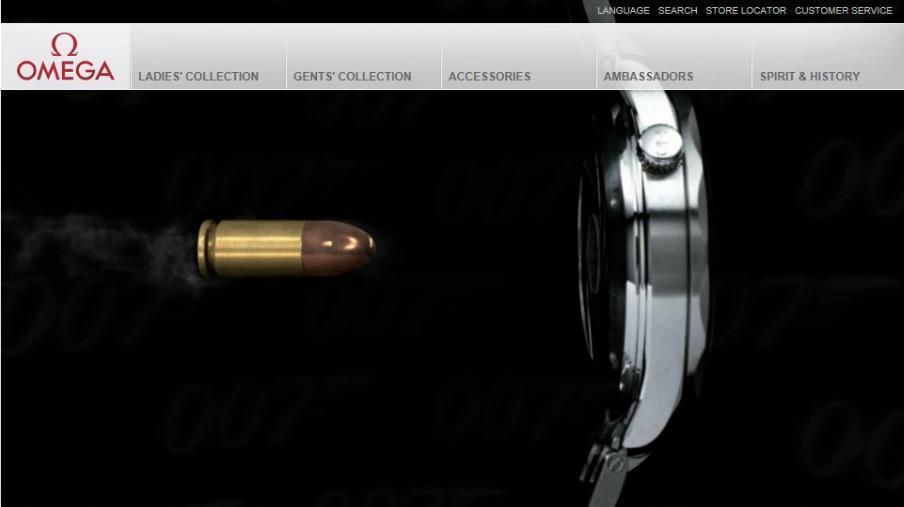
My Other BAG Day Purchase: Smith & Wesson Bodyguard .380
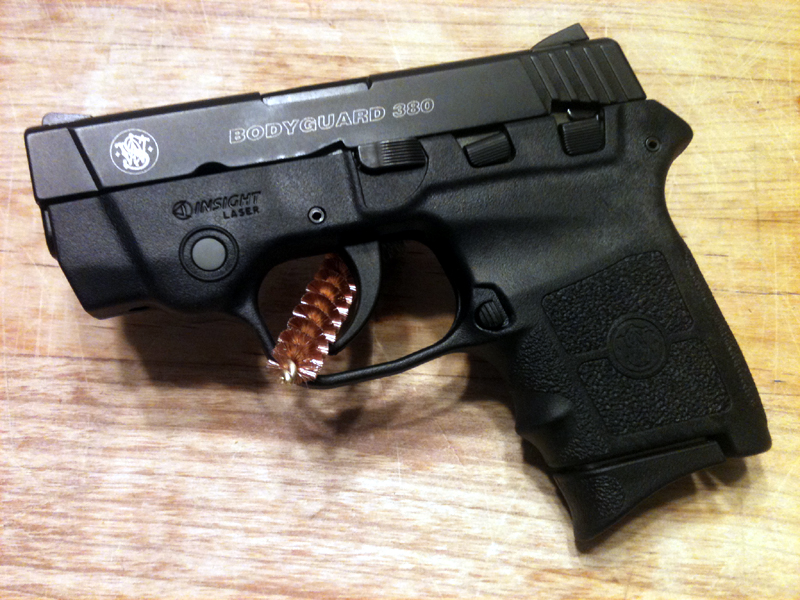 Not content with just one BAG day purchase, I went out and bought another little firearm: A Smith & Wesson Bodyguard .380. I’ve had a P-3AT for a while, and it’s a fine little pocket pistol. It’s reliable and, if not accurate, easy enough to shoot when needed. Though it does tend to wear my hands out at the range when putting more than just a couple of magazines through it.
Not content with just one BAG day purchase, I went out and bought another little firearm: A Smith & Wesson Bodyguard .380. I’ve had a P-3AT for a while, and it’s a fine little pocket pistol. It’s reliable and, if not accurate, easy enough to shoot when needed. Though it does tend to wear my hands out at the range when putting more than just a couple of magazines through it.
The Bodyguard .380 is slightly larger, and slightly more expensive, but it comes with a few more features that the P-3AT lacked. First and foremost (for me anyway) is the addition of a slide lock and a handy takedown lever. Kel-Tec neglected to put either one of these on their little .380, and that tends to make life a bit more difficult. The designers also included a safety, which I found to be redundant given the stiff (but smooth) DAO trigger, and difficult to use as well. The other selling points of the montre replique sub-compact Smith & Wesson are the inclusion of full-size sights and a top-quality Insight laser aiming device.
.380 pocket pistols are not known for their accuracy, and many have only the most rudimentary of sights atop the slide. The Bodyguard uses a black-on-black Partridge-style serrated front post and rear notch configuration favored by many pistol experts, and this is fine by itself. The addition of the Insight laser just in front of the trigger guard truly sets this pistol at a level above all the others.
- SMITH & WESSON BODYGUARD .380
- MSRP: $419
- Caliber: .380
- Capacity: 6+1
- Barrel Length: 2.75″
- Action: DAO (hammer fired)
- Weight: 11.85 ounces
- Overall Length: 5.25″
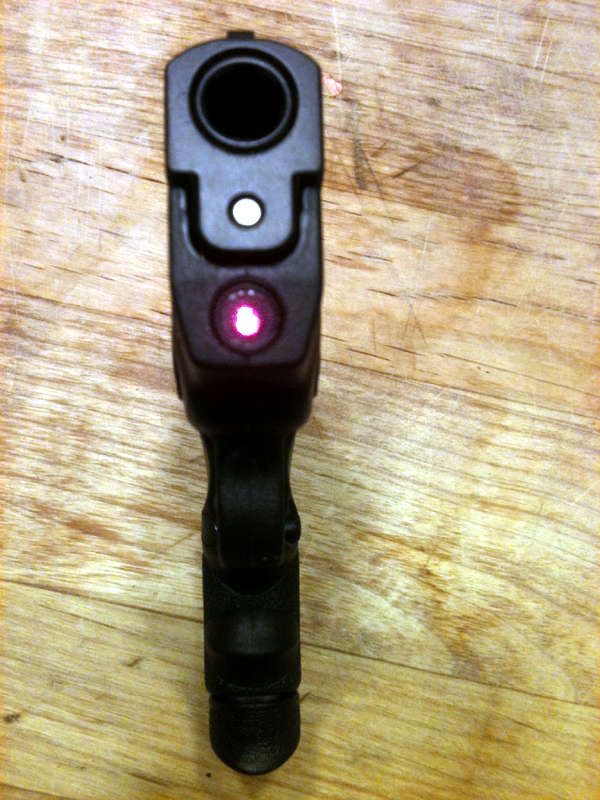
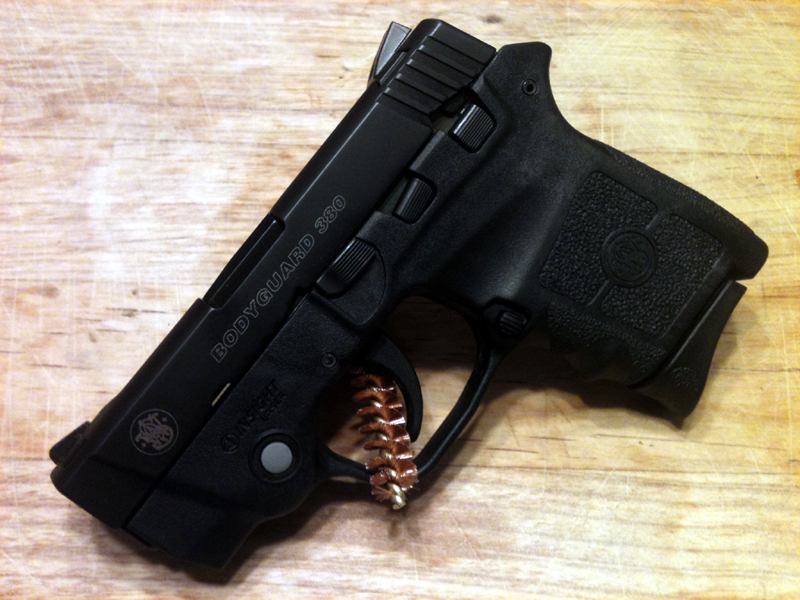
Buy A Gun Day Purchase
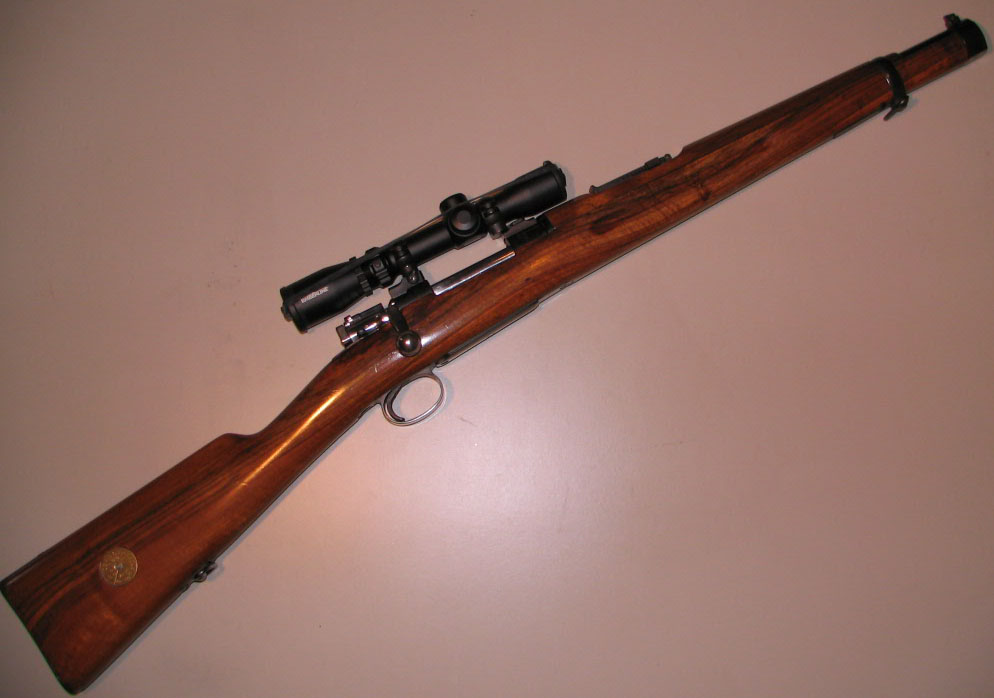 I actually picked up my Buy A Gun day (BAG) purchase a bit early this year.
I actually picked up my Buy A Gun day (BAG) purchase a bit early this year.
My gunsmith had this rifle from some years, and I’d always lusted after it. It’s a numbers matching sporterized M96 Swedish Mauser chambered in 6.5×55 cut down to carbine length. I’ve not normally been a fan of sporterized Mausers, but this one was beautifully done. The metal work is all top notch, and though you can’t really tell in the photo, the stock has been refinished and polished to a glossy sheen. Sitting on top of the bent-bolt receiver is a Bushnell Timberline 2-7×32 scope. A standard Remington safety has been added due to the fact that the Mauser safety is inoperable with the eyepiece of the scope set as low as it is.
The M96 Mausers are extremely accurate in standard surplus condition, and while this short barreled carbine can’t take full advantage of the 6.5x55mm cartridge, it still shoots around 1.5 MOA with factory Sellier and Bellot ammunition, and closer to 1 MOA with my custom handloads.
In addition, the 6.5mm cartridge is very soft shooting for a bolt action rifle, though it packs enough punch to take any medium or large game animal in North America, up to and including moose, buffalo and musk ox. I’m not planning on taking this short carbine up north for some heavy game hunts, but it works just as well on the small Texas whitetailed deer we have here, along with the larger mule deer found in the western part of the state.
It’s short, lightweight, and easy to sling and carry for long distances, which makes it pretty much the perfect brush gun for spot-and-stalk hunting in the thick cover most Texas game animals are found in.
I’ll have more updates later with a detailed range review and hopefully updates later this fall after deer season opens.
